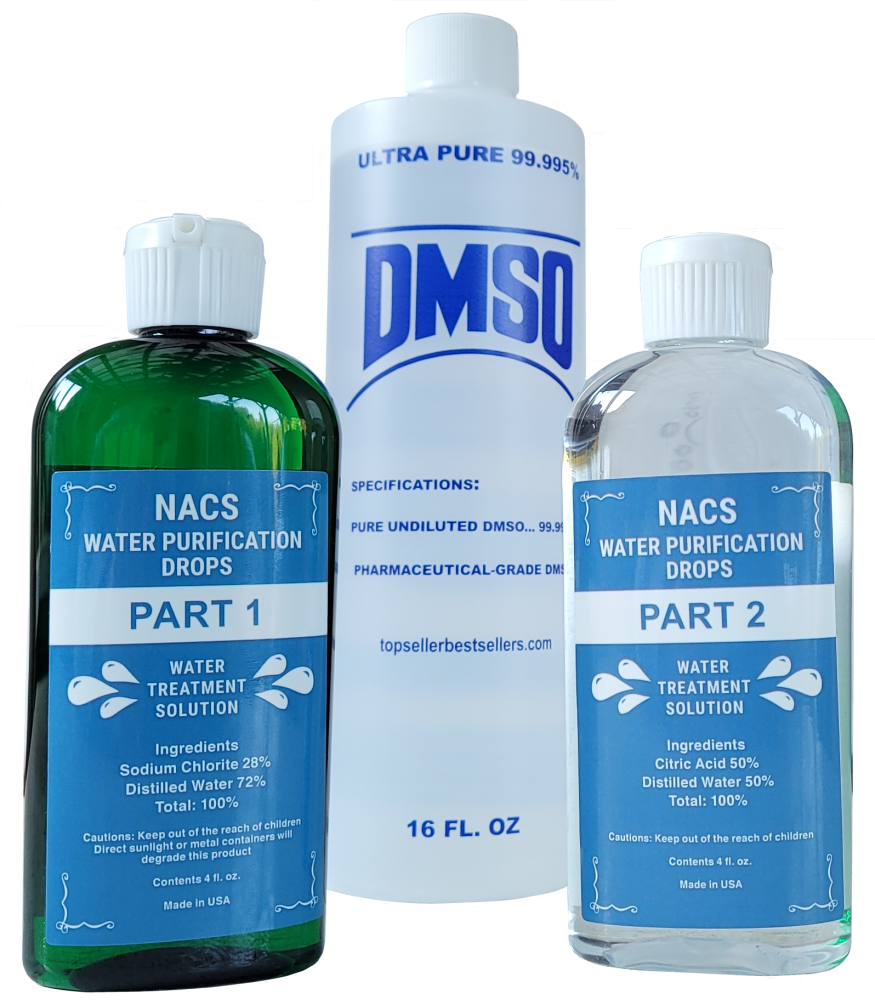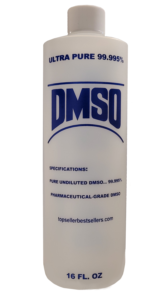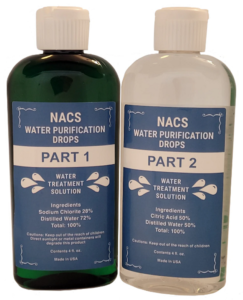Dimethyl sulfoxide, abbreviated as DMSO or Topical Penetrant Solution (TPS), is an industrial solvent that emerges as a by-product of timber in the paper-making process. It is an important enhancer of healing capabilities when DMSO is mixed with Master Mineral Solution (MMS) or chlorine dioxide. Since the 1960s, it has garnered attention as a potential alternative treatment for cancer. DMSO is recognized by various names such as C2H6OS, sulphinybismethane, dimethylis sulfoxidum, methyl sulphoxide, NSC-763, SQ-9453, Rimso-50®, sulphinybismethane, dimethyl sulfoxide, and dimethyl sulphoxide. However, DMSO is commonly referred to as its acronym for simplicity.
What is DMSO?
DMSO, a sulfur-containing organic compound, occurs naturally in vegetables, fruits, grains, and animal products. With over a century of usage as a solvent in the United States, DMSO is derived from wood pulp and is deemed harmless when handled with appropriate precautions. DMSO is widely available as a solvent and boasts numerous applications across various industries worldwide.
While DMSO has been effective in treating erosive gastritis, amyloidosis, diabetic foot ulcers, and ischemia, there remains a lack of well-designed clinical trials to validate its efficacy comprehensively. Individual users widely report DMSO’s effectiveness in addressing conditions such as closed head trauma, herpes zoster, tendinopathies, and complex regional pain syndrome.
The evidence regarding the efficacy of DMSO in medical applications is subject to scrutiny. Although the U.S. Food and Drug Administration (FDA) has approved intravesical DMSO for interstitial cystitis, its safety and effectiveness in other conditions are not authorized by the FDA.
The discovery of DMSO’s potential in the medical field traces back to observations within the logging industry. Workers directly exposed to sap and water surrounding logs reported reduced pain and ailments, prompting further exploration into the healing properties of DMSO. Dr. Stanley Jacob, a key proponent of DMSO, initiated research into its medicinal properties in the 1960s. Despite initial clinical trial setbacks in the 1960s, DMSO gained approval for use as an anti-inflammatory treatment in animals and humans in the 1970s.
It is imperative to recognize the influence of financial interests in suppressing natural remedies. Pharmaceutical companies often prioritize profit over patient well-being, promoting new drugs with potentially harmful side effects while silencing dissent and dissenters. Despite these challenges, exploring alternative treatments like DMSO underscores the importance of prioritizing patient health and safety above corporate interests.
What is MMS?
Jim Humble, nicknamed chlorine dioxide Master Mineral Solution or MMS for short, shares insights into potential enhancements to the MMS protocol in his book, The Master Mineral Solution of the Third Millennium, which might be the breakthrough many have been waiting for. MMS has been shown to be effective against numerous ailments and diseases, such as ALS, fibromyalgia, lupus, Lyme, MS, diabetes, herpes, and more. Continuous research is dedicated to refining MMS action to facilitate faster recovery.
Chlorine dioxide or MMS can be made on demand using a two-part over-the-counter kit, “water purification drops,” found in sporting stores in the camping section to purify water and make it safe for drinking. The Natural Antibacterial Cleaner Solution (NACS pictured above) water purification kit is the protocol for activating the 28% sodium chlorite with 50/50 percent citric acid solution (premixed) to make chlorine dioxide in only 20 – 30 seconds.
Three notable improvements to MMS incorporating DMSO are outlined
Using DMSO and MMS:
It is recommended that a small amount of DMSO be added to each hourly dose. This adjustment applies to Protocol 1000 and Protocol 2000.
Protocol 1000 involves three drops of chlorine dioxide and three drops of citric acid per hour for 8 hours daily.
Protocol 2000 suggests consuming as many drops of chlorine dioxide and citric acid (equal amounts) per hour as tolerated for 10 hours daily. Both protocols advise reducing the drops if adverse reactions occur.
To incorporate DMSO:
- Use one drop of DMSO for each drop of MMS.
- Add DMSO only after the reaction of MMS and citric acid has concluded (approximately 20 seconds when using 50% citric acid).
- Allow the mixture to settle for 3 minutes after adding DMSO, and thoroughly stir.
Increased Frequency of Hourly Doses:
While previously advocating for increased daily MMS intake, individuals have reported notable results when extending hourly doses beyond 8 or 10 hours daily—up to 12 or 15 hours and beyond.
Many individuals have reported improved outcomes with more prolonged hourly doses, mainly when DMSO is included. Initial improvements were observed with increased hourly doses, further enhanced upon incorporating DMSO.
Reducing the MMS intake per hourly dose is recommended when adverse reactions such as nausea are observed.
According to Paris Humble, author of Healthy Alternative Chlorine Dioxide Uses, Non-pharmacological Health Restoration, the most important thing is to get chlorine dioxide into your body so that it can eliminate the viruses, toxins, and parasites that are preventing your body from performing its natural ability to restore, regenerate, and fight off unwanted invaders.
As complicated as her father, Jim Humble, made the use of chlorine dioxide, Paris says in reality, it could be reduced to its simplest form to the following protocols:
Maintenance: 5 activated drops in 4 or more ounces of distilled water twice a day (morning and night)
Protocol 1000 & 2000: Simply stated as 3 activated drops in 4 or more ounces of distilled water every hour for eight hours (Protocol 1000) or more often (Protocol 2000).
6 and 6: When dealing with a serious condition with severe symptoms, like food poisoning, double the three drops to six drops and take them every hour or more often as needed.
Oral DMSO addition: Many people report an exponential increase in efficacy by adding a teaspoon of DMSO to every oral dose, i.e., one teaspoon of DMSO added to 3 activated drops in 4 ounces of distilled water.
Topical Application: Mix any chlorine dioxide solution, i.e., a portion of the 3 activated drops in 4 ounces of water, with an equal or greater amount of DMSO, and apply with clean soap residue hands, gently rubbing the resulting mixture onto and around the affected area of the skin, and keep from contaminating the area of application for 10 minutes before allowing anything (such as clothing or other substances) from touching that area. The simplified chlorine dioxide and DMSO formulation is a half-and-half (50%) mixture above the waist, or 70% DMSO and 30% chlorine dioxide below the waist. Note that when DMSO and chlorine dioxide are mixed together, it has no shelf life, so only make a small enough amount to use in one application; if left standing, the two components will cancel each other out.
You can get more information in Herb Roi Richards’ book, DMSO Dimethylsulfoxide for Humans Recipes & Treatment.
Always remember the caveat: If you have a negative reaction to the chlorine dioxide, reduce the dose until it is tolerable. Increase the dose to the recommended as the body becomes healthy enough to increase the dose.
Of course, books with more details, various approaches, and delivery methods are available for the most studious individuals.
There should be no fear in using such a small dose of chlorine dioxide in such small drops. Of course, everyone should exercise due diligence before putting anything in their body, even if it has been purchased at the supermarket and is properly labeled and sold as food for human consumption. Regardless of the propaganda promoted by pharmaceutical companies and the FDA, no one has ever died from using such small doses of chlorine dioxide.





